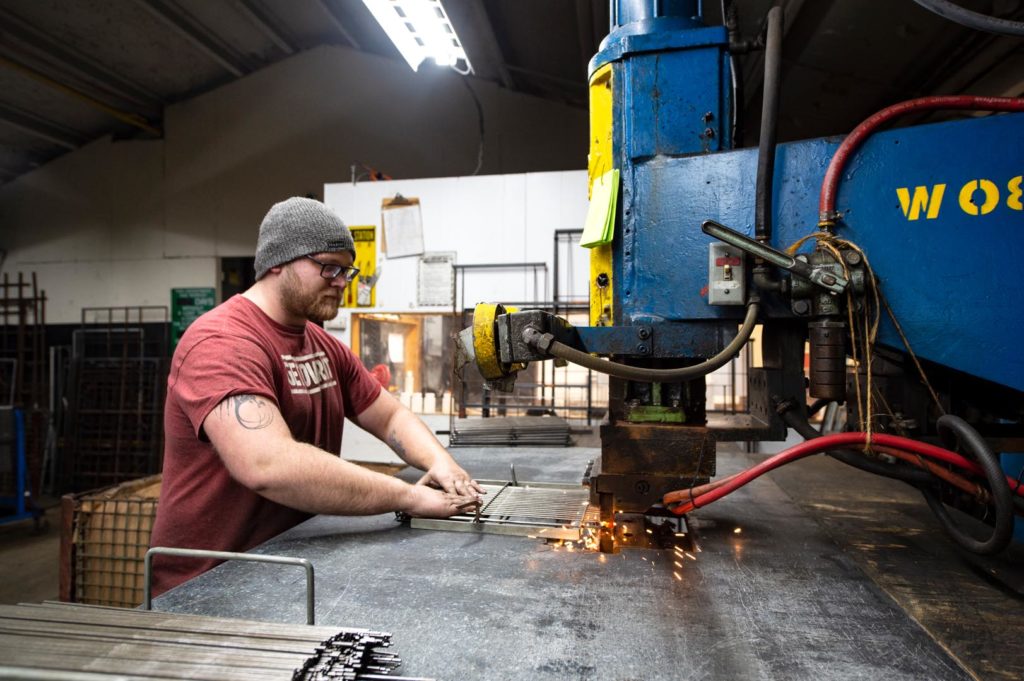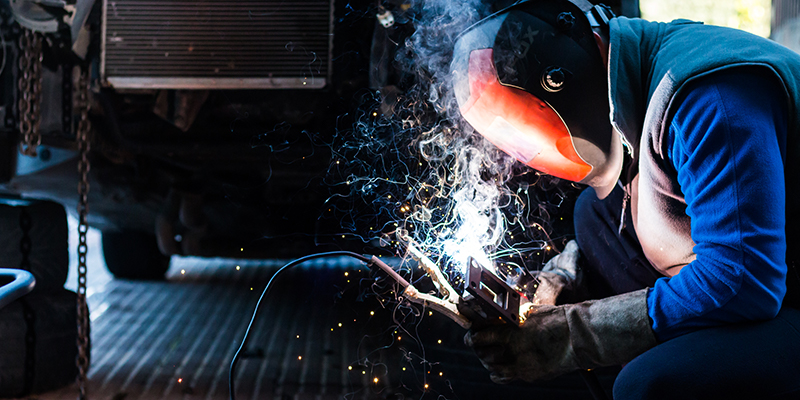Usual Welding Repair Work Issues and Exactly How to Address Them Effectively
Welding repair services commonly experience an array of issues that can jeopardize the honesty of the end product. Common troubles include poor penetration, porosity, and misalignment, among others. Each flaw offers distinct challenges that require certain approaches for resolution. Recognizing these concerns is vital for welders intending to improve their end results and skills. This discussion will check out these common welding repair service concerns and efficient methods to address them.
Inadequate Infiltration
Poor infiltration takes place when the weld steel falls short to fully fuse with the base material, leading to weak joints and prospective architectural failures. This issue often stems from not enough warm input, wrong electrode angle, or inappropriate welding speed. Welders might run into insufficient infiltration due to a mistake of the required criteria for a particular material density or type. In addition, contamination on the base material's surface area can hinder reliable bonding, intensifying the problem. To deal with inadequate infiltration, welders must assure ideal setups on their devices and keep a tidy work surface area. Regular inspection of welds is suggested to determine any deficiencies early, permitting for prompt corrections and the avoidance of compromised architectural stability in welded settings up.
Porosity
Porosity is an usual problem in bonded joints that shows up as small gas bubbles caught within the weld steel. This problem can compromise the integrity of the weld, bring about reduced stamina and potential failing under anxiety. Welding. Porosity normally occurs from contamination, dampness, or inappropriate welding strategies, which permit gases to get away into the molten weld swimming pool. To resolve porosity, welders should guarantee proper surface preparation, preserve a tidy workplace, and use ideal welding criteria. In addition, picking the best filler product and shielding gas can reduce gas entrapment. Routine assessment and screening of welds can aid recognize porosity early, ensuring timely rehabilitative actions are taken, thus protecting the quality and dependability of the welded structure
Misalignment
Misalignment in welding can arise from various elements, including inappropriate configuration and thermal expansion. Recognizing the origin is necessary for efficient resolution. A number of modification methods are readily available to realign components and guarantee architectural stability.
Reasons of Imbalance
Welding imbalance frequently stems from a variety of underlying concerns that can endanger structural stability. One main cause is improper fit-up of parts before welding, which can cause voids and irregular surface areas. Variations in thermal development during the welding process can also lead to distortion, especially if the products being joined have various coefficients of growth. Additionally, inadequate fixturing and clamping may stop working to hold components firmly in place, leading to activity throughout welding. Poorly maintained devices, consisting of welding makers and devices, may present incongruities in the weld bead, more adding to misalignment. Lastly, operator mistake, originating from insufficient training or experience, can likewise play a considerable function in producing misaligned welds.
Modification Techniques Readily Available
Resolving imbalance efficiently needs a combination of corrective methods tailored to the details issues at hand. One usual approach is using jigs or components to hold components in the correct position throughout welding, making certain regular positioning. Furthermore, preheating the products can assist lower distortion and boost fit-up. For considerable misalignment, mechanical realignment strategies, such as making use of hydraulic jacks or clamps, can be used to correct the setting before welding. Post-weld heat treatment might also be needed to eliminate tensions triggered by misalignment. Careful inspection and change during the configuration stage can protect against imbalance problems from becoming substantial issues, promoting a smoother welding process and boosting general architectural honesty.
Distortion
Distortion is a common challenge in welding that can develop from numerous variables, consisting of uneven home heating and air conditioning. Comprehending the reasons for distortion is vital for applying efficient prevention strategies. Resolving this concern not just enhances architectural stability yet additionally enhances the overall high quality of the weld.
Sources of Distortion
When subjected to the extreme warm of welding, materials frequently go through modifications that can lead to distortion. This sensation mainly arises from thermal development and contraction throughout the welding process. As the weld area warms up, the product expands; upon air conditioning, it acquires, which can create internal stresses. Furthermore, irregular heating across a work surface can exacerbate these tensions, causing warping or flexing. The sort of product likewise plays a considerable function; metals with varying thermal conductivity and welding skills coefficients of growth might respond differently, leading to unpredictable distortions. Bad joint style and inadequate fixturing can add to imbalance during welding, enhancing the likelihood of distortion. Recognizing these causes is essential for efficient welding repair service and avoidance approaches.
Prevention Techniques
Reliable prevention methods for distortion during welding concentrate on regulating heat input and ensuring appropriate joint layout. Preserving a constant warmth input assists to lessen thermal expansion and tightening, which can lead to distortion. Utilizing strategies such as pre-heating the workpiece can likewise decrease the temperature slope, advertising consistent home heating. Furthermore, picking suitable joint styles, such as T-joints or lap joints, can boost security and reduce stress focus. Implementing proper fixturing to safeguard the work surfaces in location better aids in keeping positioning throughout the welding procedure. Ultimately, staggered welding sequences can disperse warmth much more evenly, avoiding localized distortion. By using these approaches, welders can significantly decrease the likelihood of distortion and boost the overall top quality of their welds.
Splitting
Cracking is a typical problem come across in welding repair services, often resulting from numerous factors such as improper cooling rates, material choice, or insufficient joint prep work. The occurrence of splits can substantially endanger the stability of the weld, causing possible failings during procedure. To address this concern, welders should initially evaluate the origin, making sure that products are suitable and appropriately chosen for the particular application. Furthermore, controlling the cooling rate throughout the welding process is necessary; quick air conditioning can generate anxiety and bring about fracturing. Correct joint layout and prep work likewise add to lessening the danger. Implementing these strategies can improve weld top quality and resilience, eventually reducing the likelihood of breaking in ended up weldments.

Insufficient Fusion
A substantial issue in welding repair services is insufficient combination, which takes place when the weld steel does not effectively bond with the base material or previous weld passes - Montana Mobile Welding and Repair Belgrade Welding. This defect can bring about weak points in the joint, potentially endangering the integrity of the welded framework. Elements adding to incomplete blend consist of not enough heat input, incorrect welding method, and contamination of the surface areas being signed up with. To resolve this concern properly, welders should assure proper pre-weld cleaning and surface area preparation, along with adjust their welding specifications to attain sufficient infiltration and fusion. Regular assessment during the welding procedure can likewise assist determine incomplete combination early, permitting for timely corrective actions to improve the overall quality of the weld
Overheating
While welding repair work can enhance architectural stability, overheating presents a substantial difficulty that you can look here can lead to material destruction. Excessive warm during welding can change the mechanical residential properties of steels, resulting in minimized strength, increased brittleness, and warping. This phenomenon is specifically critical in high-stress applications where structural dependability is vital. Recognizing overheating can entail aesthetic inspections for staining or distortion, in addition to checking temperature level during the welding process. To mitigate the risks connected with overheating, welders must employ proper techniques, such as managing warmth input, adjusting traveling speed, and making use of appropriate filler products. Additionally, carrying out pre- and post-weld heat treatments can help restore material residential properties and improve the general high quality of the repair service, making certain lasting efficiency and security.
Frequently Asked Concerns
What Are the Usual Indications of a Welding Defect?

Just How Can I Examine My Welds for High quality?
To check welds for top quality, one can use aesthetic examinations, ultrasonic testing, and radiographic techniques. Each method ensures architectural integrity, recognizes defects, and verifies adherence to defined standards, inevitably boosting the reliability of the bonded joints.
What Safety Safety Measures Should I Take While Welding?
When welding, one ought to prioritize safety and security by wearing appropriate personal safety equipment, ensuring proper ventilation, safeguarding flammable products away, preserving a clean workspace, and being mindful of environments to avoid injuries and mishaps.
Can I Fix a Weld Without Redesigning the Entire Joint?
Fixing a weld without redoing the whole joint is feasible, depending upon the damages (Montana Mobile Welding and Repair Welding). Methods such as grinding, including filler material, or utilizing a welding procedure can efficiently resolve particular problems while maintaining the bordering framework
What Tools Are Important for Efficient Welding Repair Works?
Important tools for efficient welding repair work include a welding device, cable brush, grinder, protective gear, clamps, and filler materials. Each tool plays a crucial function in ensuring top quality and safety and security during the fixing process. Porosity typically arises from contamination, moisture, or incorrect welding techniques, which allow gases to escape right into the liquified weld pool. Poorly kept tools, consisting of welding equipments and devices, might present variances in the weld bead, more contributing to misalignment. When subjected to the intense warmth of welding, products often go through changes that can lead to distortion. Splitting is an usual issue run into in welding repair services, typically resulting from different aspects such as inappropriate air conditioning rates, product choice, or poor joint preparation. A substantial issue in welding repair services is insufficient blend, which takes place when the weld steel does not appropriately bond with the base material or previous weld passes.